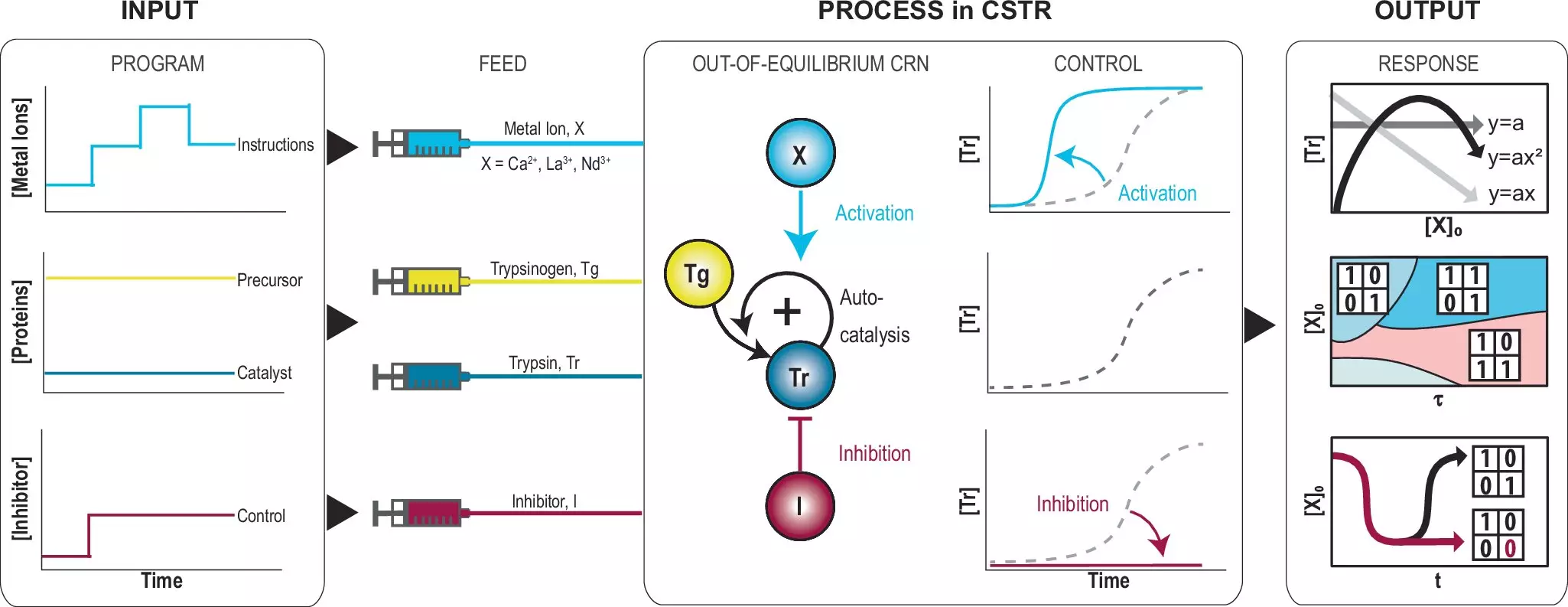The quest for a computing paradigm that mimics the intricate processes of the human brain has received a significant boost from researchers at the University of Twente. Their recent exploration, detailed in the journal *Nature Communications*, unveils a novel approach to manipulating chemical reactions through the precise control of metal ions. This pioneering work not only addresses the pressing need for energy-efficient information processing systems but also paves the way for bio-inspired computing that harnesses the efficiencies observed in natural biological systems.
At the core of living organisms lies a sophisticated tapestry of chemical reactions allowing them to adapt and respond to environmental cues. This process of information processing is vastly more energy-efficient compared to conventional digital computing systems, which consume considerable power in the operation of transistors and memory storage. For years, scientists have grappled with how to replicate the elegance of molecular information processing observed in nature. The University of Twente’s researchers have made significant strides in this area by demonstrating that metal ions can effectively simulate complex mathematical functions, such as polynomials and logical Boolean operations.
One of the standout achievements of this research is the ability to program chemical reactions such that they not only react to present conditions but also possess a form of memory by recalling prior states. Albert Wong, one of the researchers, articulates the importance of this discovery, hinting at its potential role as a cornerstone for developing intelligent systems. By manipulating the rate of autocatalytic reactions—these are reactions that can accelerate themselves—the team used the conversion of trypsinogen to trypsin as a test case. Importantly, they demonstrated how introducing a slowing agent can result in a system capable of existing in two different states, thus facilitating temporary information storage.
The implications of this groundbreaking research extend far beyond mere chemical engineering. The ability to create programmable chemical networks opens up new horizons for applications related to artificial intelligence, smart materials, and even fields as diverse as nanobiotechnology and the study of life’s chemical origins. By crafting systems that mimic cognitive processes at a molecular level, researchers could redefine not just how computers operate but also how materials respond to stimuli, leading to innovations ranging from self-healing materials to adaptive sensors.
The University of Twente’s innovative approach illustrates a critical advancement in the field of chemical computing. By effectively bridging the gap between traditional computing mechanisms and the complex chemistry of life, this research sets a precedent for future explorations that seek to unify biological processes with technological development. As scientists continue to decode the intricate labyrinth of chemical information processing, the dream of machines that think and learn like humans inches closer to reality.


Leave a Reply